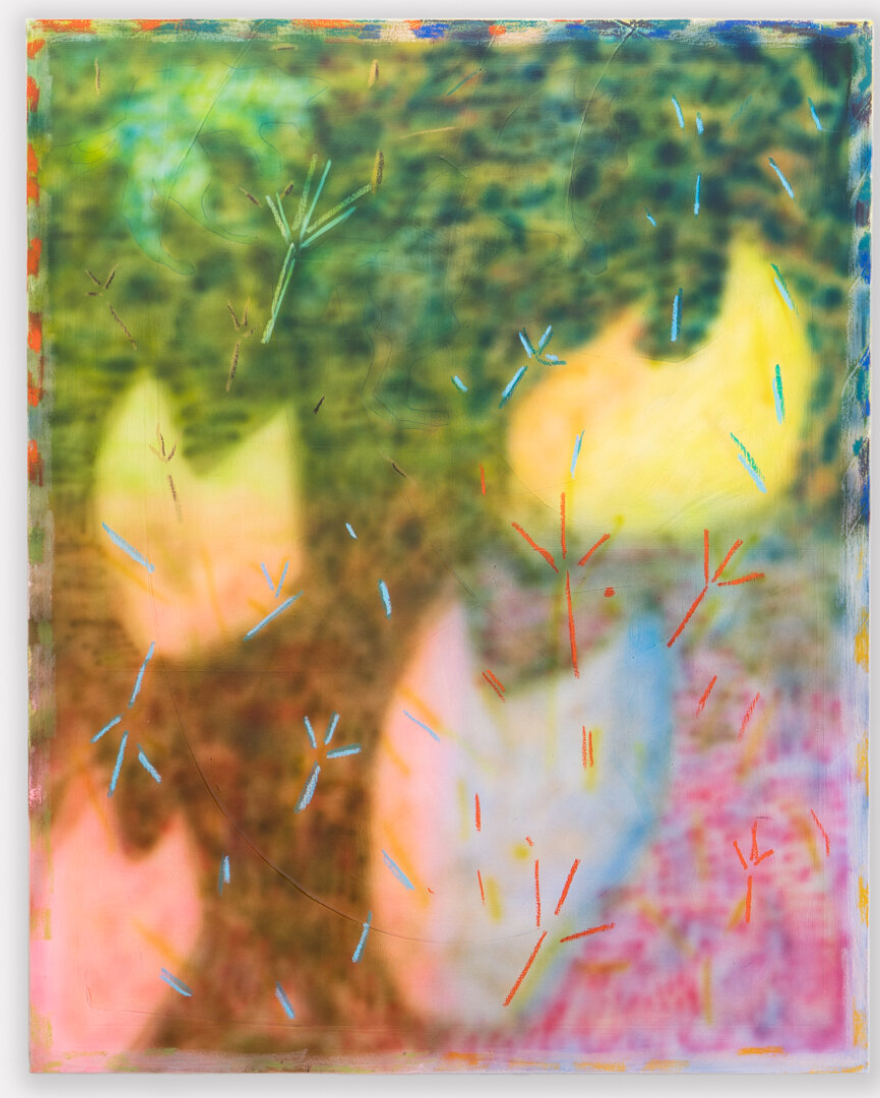The Work Doesn’t Stop When You Leave: Artist Catherine Haggarty
- Caitlin Correa
- Feb 5, 2021
- 4 min read

It was such a pleasure to have Catherine Haggarty on the show! Catherine is an artist based in Brooklyn, NY who recently had a solo exhibition at Massey Klein Gallery. She is also co-director of NYC Crit Club, a space offering community, connection and critiques for artists. In this interview, Catherine talks about learning how to make work when no one is looking and how this has served her as an artist moving forward in her practice. We also discuss her current work that she recently exhibited at Massey Klein Gallery in the Lower East Side.
Catherine Haggarty’s paintings are reminiscent of the brief moment we experience waking up from a dream. When everything rises to the surface at once. The edges of objects blur and we wonder what we just saw. You can try to hold onto the experience, but you can’t completely keep the image in your mind, rather the image dissolves into something else. This is how I read Catherine’s paintings, as a back and forth between reading forms and reading space. The painting continually reconfigures itself as your eye is drawn to references of animal figures that you read as a positive shape. This figure then flips to become a negative space, bringing your eye deeper into the painting.
Haggarty’s paintings and curatorial work have been reviewed by and featured in Bomb Magazine, Artnet, Hyperallergic, Two Coats of Paint, Brooklyn Magazine, The New York Times, Maake Magazine, Art Maaze Magazine, Art Spiel, Final Friday Podcast, Sound and Vision Podcast, The Black and White Project, Curating Contemporary’s book Eraser, and Young Space. Catherine has been a visiting artist & critic at SUNY Purchase MFA (2020), Hunter MFA (2020), Denison University (2020), Brooklyn College MFA (2019) and in 2018 Haggarty was the Anderson Endowed Lecturer at Penn State University. Haggarty’s solo, An Echo’s Glyph at Massey Klein Gallery in the Lower East Side is on view Dec 18th 2020 - January 30th, 2021. Previous solo shows include This Friday Next Friday (NYC), Bloomsburg University (PA), One Main Window (NY), One River School of Art and Design, Proto Gallery (NJ), and Look and Listen in Marseille France.
Haggarty earned her M.F.A from Mason Gross, Rutgers University in 2011. Currently, Haggarty is an adjunct professor at The School of Visual Arts (SVA) also co-directs NYC Crit Club with artist and critic, Hilary Doyle.

“In the summer of 2019 I visited ancient caves in France. I remember the temperature of the caves, the lines of raw earth pigment that formed figures & animals on the dark, damp walls. The connection to drawing and to pigment begins with our ancestors and threads through time to present day. I explore the differences between painting and drawing because the shared language offers insight on how we perceive and understand images.
By combining color, form, and patterns, I am able to expand the associations sparked by abstract animal signifiers. The level of representation in the work oscillates between recognizable figurative outlines to fields of color suggesting shape. To me, painting is both additive and subtractive and has no exact set of steps of production - rather a framework that allows in specific gestures, colors and marks in an irreversible order. This unplanned exchange requires my attention to where the patterns and marks lead me. I aim to remain open to movement and unforeseen connections in the work, a practice that reflects my studio habits and my way of operating in the world.
I avoid the notion of ‘knowing’ a form in visual language by conflating soft edge form that pushes against high saturations. Confounding spatial logic and touch in this way offers more questions than answers. The collection and also the subversion of various animals' coats, footprints and patterns in the paintings is far more interesting to me than the naming of the animal. I am not interested in the depiction of the one thing, rather I am interested in how my processes and materials can work with me to create new associations of the subject at hand.
The slippage of form in my paintings mirrors a slippage in language and meaning I notice in the world. Words are entirely abstract - they signify the subject at hand but often morph meaning with context, time, and language. Visually, I am interested in my process and subjects can mirror this dance. This fictional space I build is not based in a logical perspective or specific environment. Pattern is used as a tool to build an environment through repetition and motion - this defies the idea that animal forms might live in a specific space.”-CH
TAKEAWAYS FROM THIS EPISODE:
-Learning how to make work that nobody likes or will see
-Not knowing how you are going to get where you want to be, but taking the steps anyway
-Building the community you want to be a part of
-Supporting and being in contact with more artists
-Drawing from your work
- A good 2 hour session can be better than an 8 hour session
-Why Catherine began curating exhibitions
-Working with Ortega y Gasset Projects
-NYC Crit Club
-How to be alone in the studio
-Art is a life not a career
-Studio is a sacred place and sacred time
-The work doesn’t stop when you leave the studio
Artist Shout Outs:
Andrew Prayzner
Hilary Doyle
SPONSOR:
A tax expert who gets what you do! Engaging tax workshops for artists. Use code ILIKEYOURWORK25 to save $25 on Money Bootcamp!
https://www.sunlighttax.com/
LINKS:














Comments